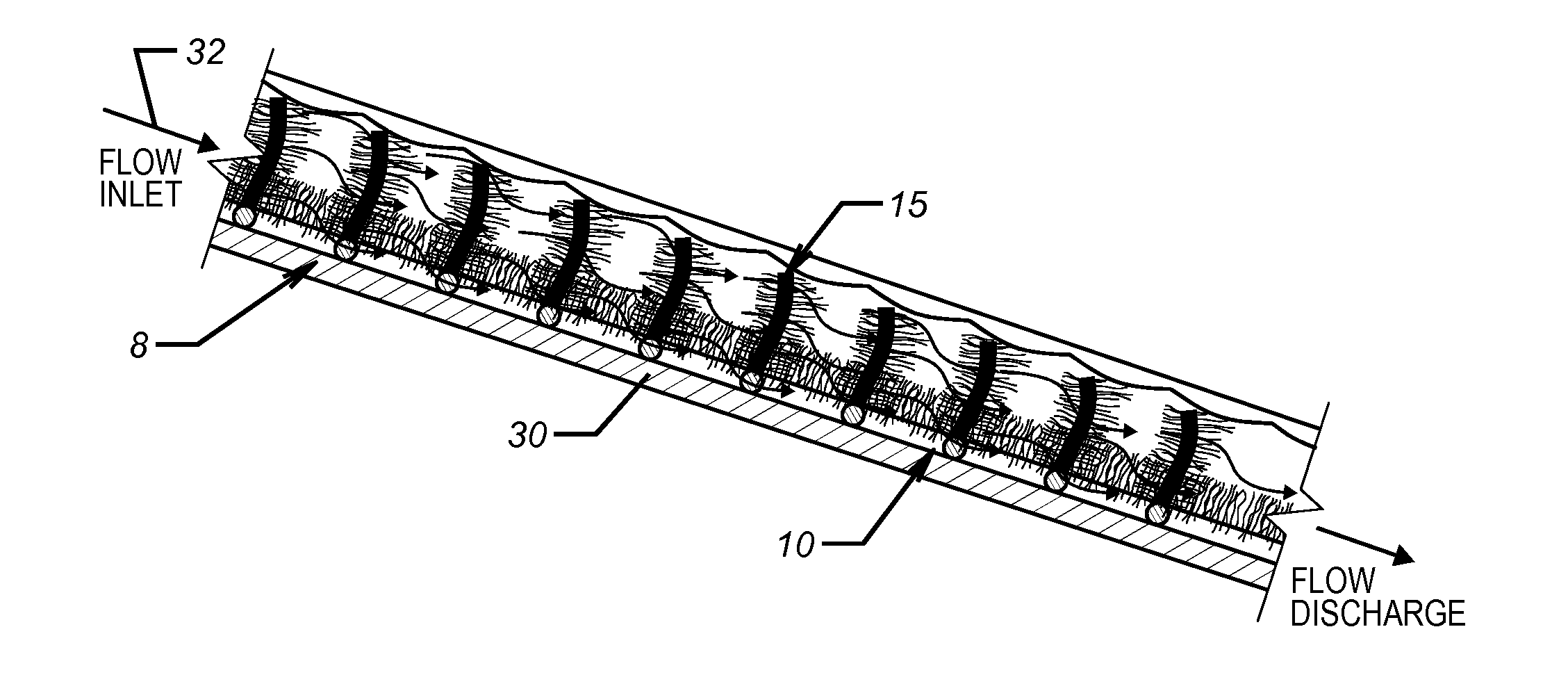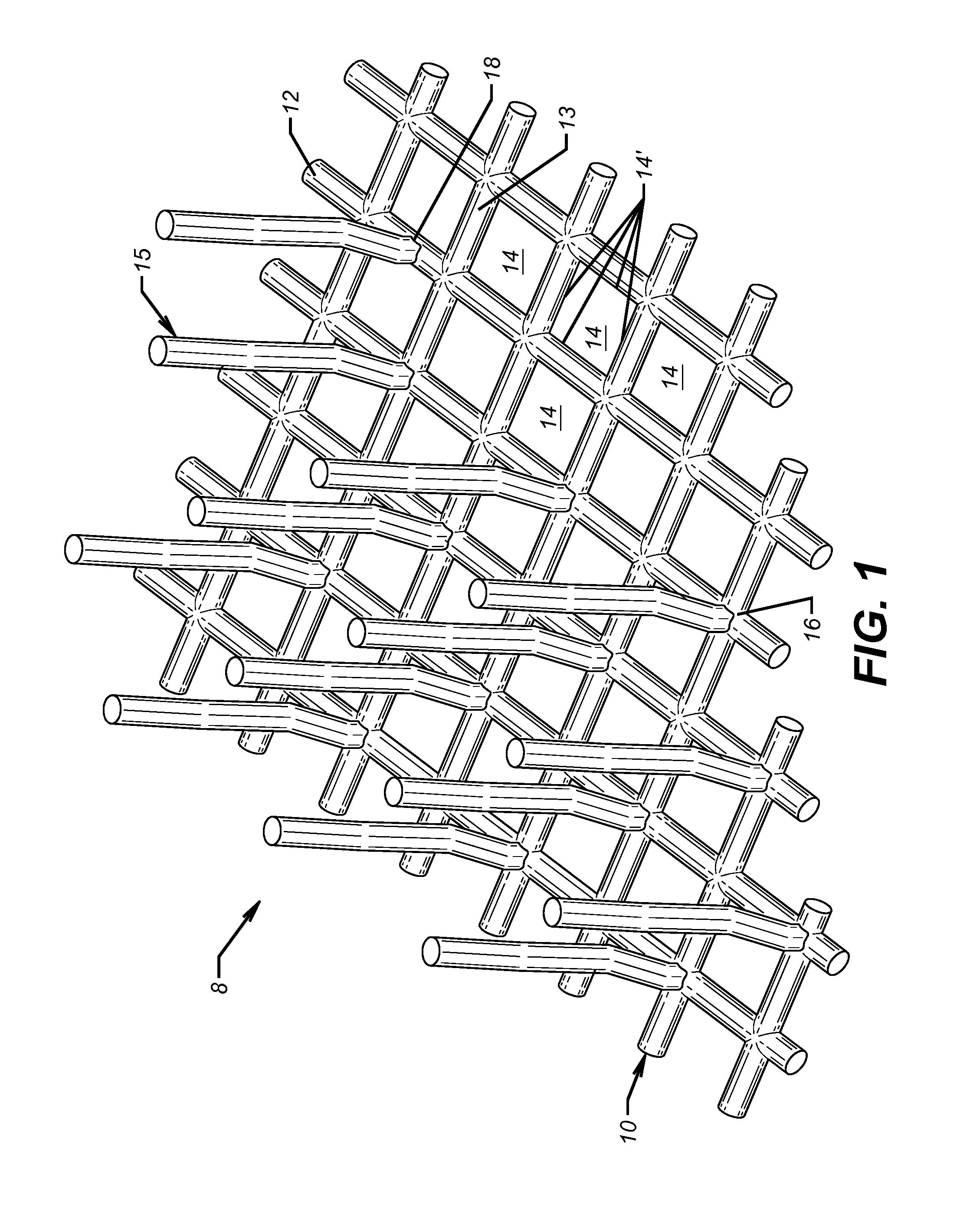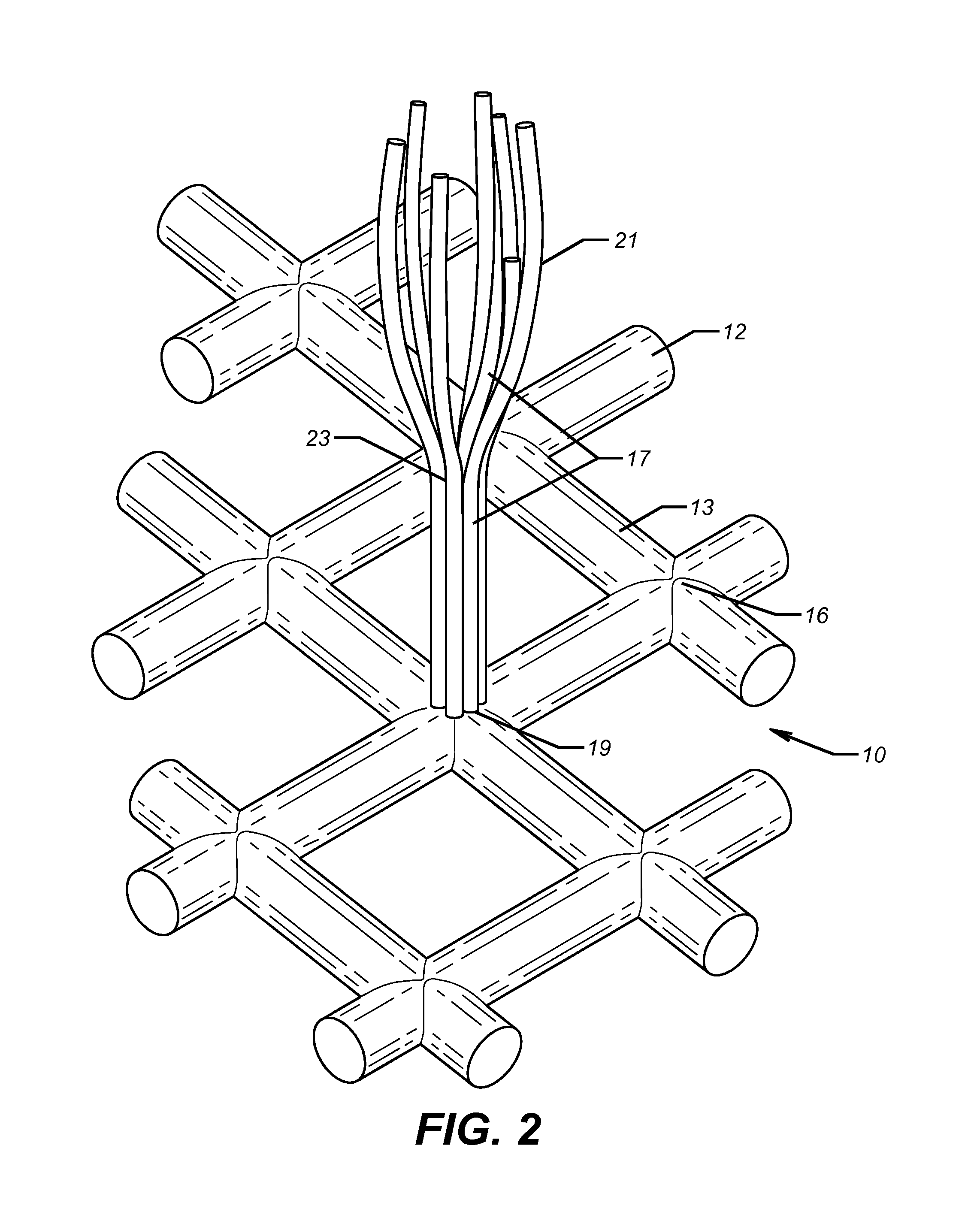Basal screen for enhancing algal biomass growth
a technology of biomass growth and basal screen, which is applied in the direction of sustainable biological treatment, biological water/sewage treatment, plant cultivation, etc., can solve the problems of reducing the efficiency of water remediation, reducing the capacity of water remediation and by-product biomass, and reducing the efficiency of harvest cycle. , to achieve the effect of improving the efficiency and productivity of treated water
- Summary
- Abstract
- Description
- Claims
- Application Information
AI Technical Summary
Benefits of technology
Problems solved by technology
Method used
Image
Examples
example 1
[0043]A 3-D screen grid was hand woven from 1-2 cm long Dacron fibers. The Dacron fibers were selected since they provided for minimal degradation under solar UV. The performance of the 3-D screen was compared with 2-dimensional grids which were composed of off-the-shelf, deep pile throw rugs. The grids were used in an ATS system on the Chesapeake's Great Wicomico River (a 10-14 ppt saline environment at about mid-Bay, north to south). While some of the 2-dimensional rugs had a structure that considerably enhanced diatom retention, after several months, the woven Dacron 3-dimensional (3-D) test screens provided the greatest productivity of all the test screens especially in the central part of the ATS test floway.
example 2
[0044]3-D screens, arrayed with standard 2-D algal turf screens both above and below, were compared to 2-D algal turf screens. The results in productivity are illustrated in FIG. 5 where the plotted points are means of two 3-D and three 2-D screens and demonstrate that the 3-D screens exhibit over 2 times the productivity of the standard 2-D screens. A t-test demonstrated a high level of significance, p=0.0003. The mean production for the 3-D screen during the test period was 11.5 g / m2 / day, compared to 4.0 g / m2 / day for the 2-D screens.
PUM
 Login to View More
Login to View More Abstract
Description
Claims
Application Information
 Login to View More
Login to View More - R&D
- Intellectual Property
- Life Sciences
- Materials
- Tech Scout
- Unparalleled Data Quality
- Higher Quality Content
- 60% Fewer Hallucinations
Browse by: Latest US Patents, China's latest patents, Technical Efficacy Thesaurus, Application Domain, Technology Topic, Popular Technical Reports.
© 2025 PatSnap. All rights reserved.Legal|Privacy policy|Modern Slavery Act Transparency Statement|Sitemap|About US| Contact US: help@patsnap.com



